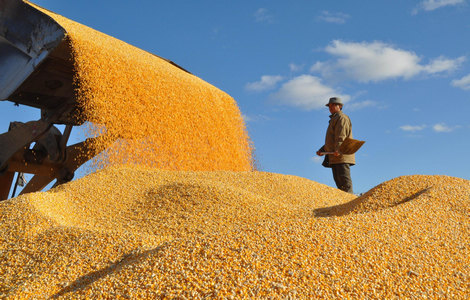
Closer trade ties between China and Chile, following the signing of a landmark trade agreement, are seeing a surge of exports to China, a leading Chilean official said.
The growing exports, especially non-copper goods, are allowing the South American nation to diversify its expanding economy, said Alvaro Jana Linetzky, director general of international economic relations with the Chilean Foreign Ministry.
"China is Chile's major trade partner, and accounts for 20 percent of total exports," Linetzky said.
"This is mainly due to the Free Trade Agreement signed between the two countries."
The agreement was signed in November 2005 and it came into force in October 2006.
Under the FTA, the two countries are expected to make 97 percent of products duty free within 10 years.
According to the Chinese General Administration of Customs, trade with Chile surged by 21.1 percent from a year earlier to $31.46 billion in 2011, with China's imports reaching $20.64 billion, and exports hitting $10.82 billion.
"China-Chile economic and trade relations are stable with solid foundations," said Linetzky.
Chile is China's third-largest trade partner in South America.
Linetzky pointed out that the FTA has stimulated the exports of non-copper goods.
"We have witnessed more and more exports of non-copper goods, and the trend will continue. They are becoming an increasingly important export category," he said.
Although China is the largest destination for Chilean exports of copper and copper-related goods, the South American nation's other exports, such as fruit, wine and fish meal, have experienced rapid growth recently.
China is the major destination for Chilean fish meal (often used as fertilizer) the sixth-largest for wine and the ninth-largest for fruit.
Apples and fish, in particular, seemed to have whetted the trade appetite.
In 2004, about 34 percent of Chinese apple imports came from Chile, but the figure rose to 54 percent in 2011. In 2004, 28 percent of Chilean exports of trout went to China, and this figure jumped to 82 percent in 2011.
Chilean exports of fresh fruit in 2011 were 33 times that of 2004, and about 60 percent of grape exports went to China in 2011 from negligible beginnings.
"We believe non-copper goods will make up for an increasing proportion of future exports," said Linetzky.
Chile is the world's largest copper producer and is responsible for about one third of global output. In 2011, Chile's economy grew by 6 percent.
Chilean growth was traditionally highly reliant on sales of copper, but a more favorable environment for foreign business is being created.
Amid the European debt crisis and the fragile global economic outlook, Chilean officials repeatedly emphasized the importance of closer ties with the Asia-Pacific region, especially with China.
And they said China's comparatively high growth, and commitment to transform economic growth, will provide opportunities for Chilean exporters.
China is a major copper consumer and also the largest export destination for Chilean copper, and in 2011 copper and copper-related goods contributed 80 percent of Chilean exports to China by value.
But "Chile is committed to diversifying its products of exports to China, from copper to categories including processed and agricultural goods, as well as food," said Linetzky.
China and Chile set a target of doubling trade to $60 billion by 2015, and Linetzky believes this is an "achievable target" as the two countries further implement the FTA.
Contact the writer at dingqingfen@chinadaily.com.cn







